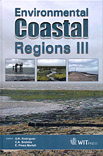Air Pollution Prediction By Artificial Neural Networks
Price
Free (open access)
Transaction
Volume
43
Pages
10
Published
2000
Size
769 kb
Paper DOI
10.2495/CENV000091
Copyright
WIT Press
Author(s)
M.I.V. Furtado & N.F.F. Ebecken
Abstract
In this work, an artificial neural network strategy is presented to predict suspended paniculate matter in the atmospheric air. The considered area is the Rio de Janeiro metropolitan region, a brazilian urban center. The topography, the nonuniform occupation, the Guanabara Bay and the meteorological peculiarities contribute to the need of a complex model. Backpropagation, generalized regression neural networks and genetic algorithms are used to evolve neural network structures to search for significant input variables and maximize the predictive accuracy of the results. The input data corresponds to 14 meteorological variables on different locations. The predicted values are satisfactory and the methodology presented promises perspectives. 1 Introduction Artificial Neural Networks are a mathematical paradigm ins
Keywords





